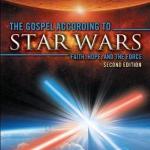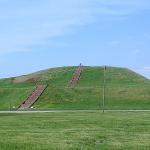Page H. Kelley, Terry L. Burden and Timothy G. Crawford, Revised by Timothy G. Crawford, Biblical Hebrew: An Introductory Grammar (2nd ed. Grand Rapids: Eerdmans, 2018).
Page H. Kelley, Terry L. Burden and Timothy G. Crawford, Revised by Timothy G. Crawford, A Handbook to Biblical Hebrew: An Introductory Grammar (2nd ed. Grand Rapids: Eerdmans, 2018).
By Jill Firth
Page Kelley’s classic Grammar (1992) and Handbook (1994) have been revised by Timothy G. Crawford, one of the original authors and now dean and professor of Old Testament and Hebrew in the College of Christian Studies, University of Mary Hardin-Baylor in Texas. Page Kelley was professor of Old Testament and Biblical Hebrew at Southern Baptist Seminary in Kentucky from 1951-1992. He authored ten books, including commentaries on Exodus, Isaiah, and Amos. The original Grammar was noted for its comprehensive explanations, and its use of biblically based examples and exercises, and the Handbook featured answers to exercises, footnotes which explained complexities, and additional exercises.
The revised Grammar is arranged in 31 chapters, with the first 11 chapters devoted to the alphabet, vowels, article, and nominals including the construct relationship (Lesson 10) and pronominal suffixes on prepositions, particles and nouns (Lesson 11). A general chapter introducing verbs covers the Qal Perfect (Lesson 12) which is followed up by a chapter on interrogatives and numerals (Lesson 13) then the remaining stems and remaining perfects (Lesson 14). The other conjugations of the strong verb in all stems are introduced in Lessons 15-20. After a chapter on verb sequences (Lesson 21), ten chapters are devoted to the weak verbs (Lessons 22-31). The Grammar includes verb charts and a substantial glossary. The vocabulary is to some extent based on semantic domains, so that terms for human relationships are found together in Lesson 3, places in Lesson 5, and times of the day in Lesson 6. This aids retention and facilitates a grasp of the Biblical Hebrew worldview.
If using the Grammar to introduce new students to Hebrew, Lessons 12-14 could be profitably extended over a couple of lessons each. Lesson 12 introduces both strong and weak verbs, and Lesson 13 includes the numerals as well as a vocabulary list for the chapter. Lesson 14 covers all the stems, and the exercises require identification of roots and stems. In a second semester, some teachers will prefer to abbreviate the study of weak verbs in Lessons 22-31 to allow interaction with larger blocks of text. The Grammar and Handbook would also be very suitable for students wishing to refresh their Hebrew.
As a student, I learned from Kelley’s original work. I appreciated the clear explanations in the Grammar and the wealth of exercises in the Handbook. The new editions of both Grammar and Handbook are well laid out and attractively presented. In addition to revising the Handbook, Timothy Crawford has added a guide for identifying verbs, a “Word List” divided by frequency and a list of materials for further study.
Jill Firth is a Lecturer in Hebrew and Old Testament at Ridley College in Melbourne and holds a PhD in Psalms studies.
















